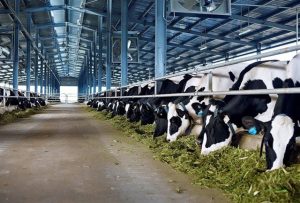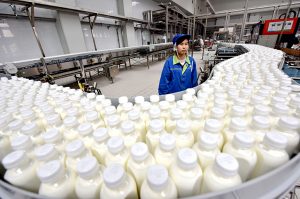
The publication’s assessment of global feed production in 2021 took account of data from more than 140 countries and over 28,000 feed mills. Compound feed production and prices were collected by Alltech’s global sales team in partnership with local feed associations in Q4 2021.
Global feed tonnage, based on that data, is estimated to have jumped 2.3% to 1.235 billion metric tons (mt) in 2021.
The top 10 feed-producing countries over the past year were: China, followed by the US, Brazil, India Mexico, Spain, Russia, Turkey, Japan, and Germany.
China’s growth was down to ongoing consolidation and modernization of the country’s feed industry, said Alltech.
Commercial feed tonnage increased, driven in particular by the recovery and transformation of China’s pig sector, with swine farms moving from utilizing food waste to contracting with professional feed mills, found the report.
Regional data
North America saw steady growth of 1.9% over the last year, as per the data.
Latin America experienced moderate growth of 0.5%; Brazil remained the leader in feed production for the region and ranked third overall globally.
Europe saw a decrease of 1.2% in its feed production due to issues such as African swine fever (ASF) and high raw material costs, combined with low end-product prices, declines in ruminant feed production and COVID-19-related government regulations.
Asia-Pacific saw the largest regional growth of 5.7% – it is home to several of the top 10 feed-producing countries, including China, India and Japan.
Africa saw growth of 2.4%, despite challenges caused by high raw material prices, foot and mouth disease and geopolitical tensions that have impacted the exports of foods of animal origin and caused raw material shortages in some areas.
Feed production by species
The poultry sector experienced a slight reduction in layer feed tonnage, a decline of 1.4%, whereas broiler feed production increased, by 2.3%, reads the report.
“The layer business has been facing challenges in many countries due to the high costs of raw materials, combined with flat/low retail prices for eggs. Animal welfare concerns are also a driver, as cage-free and free-range production are on the rise in many countries.
“In Europe, the most significant decreases occurred in Norway, Russia, Ukraine and Poland. Asia-Pacific also saw a decrease, while tonnage in Australia grew by 4%.”
Factors that have aided the broiler sector include an increased demand for easy-to-cook proteins as restaurants closed during the pandemic and an affordable protein option, as the prices of other meat proteins increased. China and India accounted for the most significant increases in Asia-Pacific. In Latin America, Peru, Brazil, Paraguay and Mexico contributed significantly to the region’s 5% increase, revealed the publication.
Pig feed
Pig feed production increased significantly, by 6.6%, which was primarily boosted by Asia-Pacific’s recovery from ASF. Japan, South Korea, Malaysia and China demonstrated just such a recovery from ASF, but Indonesia, Myanmar, the Philippines, Thailand and Vietnam continued to feel the impact of the disease, noted Alltech.
“In Europe, countries where ASF is not or is no longer a problem were still impacted by a pork surplus due to a reduced demand from China.”
Cattle feed
Dairy feed tonnage increased slightly, by 1.9%. Asia-Pacific saw the biggest increase, which is mostly attributed to growth in India, noted the report.
“As COVID-19 lockdowns eased around the world, the reopening of the hospitality industry and in-person classroom education helped boost milk consumption overall. In Australia and New Zealand, dairy feed tonnages were down 6.7% and 2.5%, respectively.”
Beef feed production shrunk by 1.9% globally.
“The industry continues to be challenged by greenhouse gas (GHG) regulations and perceptions of environmental and health impacts.
“European markets are especially focused on reducing GHG emissions in an effort to align with COP26, the EU Green Deal and the FEFAC Feed Sustainability Charter 2030.
“The US experienced an increased steer and heifer harvest due to carryover from 2020, as well as a record demand for beef exports.
“Argentina saw a significant reduction due to reduced exports, and high inflation and the devaluation of the local currency are also affecting Argentinians’ purchasing power, although export regulations are easing and could impact Argentina’s outlook for 2022.”
Aqua feed
The aquaculture industry continues to grow in many markets and increased by an impressive 3.7%.
“Recirculating aquaculture systems (RAS) are becoming more prevalent, and consumer demand for fish is on the rise.
“Markets with ASF challenges saw additional growth due to their reduced pork supply. India saw a significant increase in its aquaculture feed tonnage of 9%; additionally, Indonesia accounted for 10% of Asia-Pacific’s growth. In Latin America, Chile, Brazil, Honduras and Ecuador contributed to the regional growth of 5.6%.”
Pet feed
Pet feed production had the highest increase among the sectors, with an 8.2% rise in production.
“This significant increase is largely due to the rise in pet ownership amid the COVID-19 pandemic. While some regions remained flat, there were no reported decreases in any region around the world.”

























